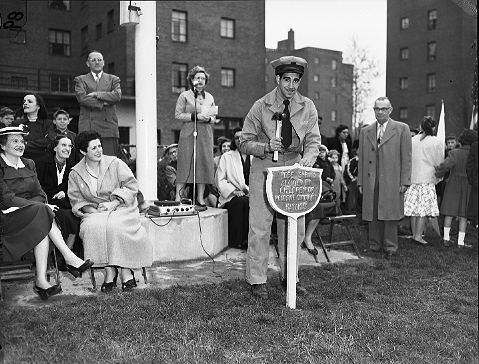Education
In reply to the discussion: Former NYC School Chancellor Joel Klein Is Not Telling the Whole Truth About His Personal History [View all]HiPointDem
(20,729 posts)subsidized housing (e.g. the gov't didn't pay part of the rent to keep it cheap for renters). klein's family's income was *above* the median. He didn't grow up poor in any way, shape or form.
and far from being diverted from some impoverished life of crime by a *special* teacher, he was a top student all through his entire school career, because he came from an upper middle class, educated jewish family that valued & pushed education.
klein is a big fat liar.
try reading the article before posting irrelevant comments.
Klein’s family was also not poor by any reasonable criteria. Charles Klein’s annual post-office salary in the 1950s was about equal to the national median household income. The median national salary for full-time female clerical workers was about three-fourths of the national median household income. Thus, so long as Claire Klein worked, the Klein family income would have been substantially in excess of the national median. Indeed, Charles Klein was well-off enough to take his family on an annual summer vacation to the Catskills...Charles then retired with a defined-benefit federal pension to a Florida apartment near the beach—an option unlikely for public-housing residents as we now know them...
Klein did live in public housing after his family moved to Queens in 1955 when he was nine years old. But he fails to say—perhaps because he truly doesn’t realize—that some public housing in New York in the 1940s and 1950s, including the Woodside Houses project where his family resided, was built for white, middle-class families. The poor and the problems poverty causes were unwelcome. This distinction is critical to understanding Klein’s history and why it undermines his current policy prescriptions.
Returning World War II veterans like Klein’s father confronted a housing shortage. To address it, New York erected projects like Woodside Houses, an attractive six-story development with trees, grassy areas, and park benches. Residents were not on the dole but paid rent that covered their housing costs; apartments were not subsidized and were not part of the national low-income housing program.
Rather, for prospective tenants in Woodside Houses and its sister projects, the New York City Housing Authority enforced 21 disqualifying factors. Excluded were single-parent families and those with irregular employment history, out-of-wedlock births, criminal records, narcotics addiction, or mental illness—in other words, any family with the qualities we now associate with public housing. Couples had to show marriage licenses to apply. To filter out undesirables, inspectors visited applicants’ previous homes to verify good housekeeping habits, sufficient furniture, and well-behaved children. Neighborhood public schools serving complexes like Woodside Houses thus didn’t have to contend with unruly adolescents; they had already been weeded out by the Housing Authority.

arbor day celebration at woodside houses, 1953
http://prospect.org/article/joel-kleins-misleading-autobiography